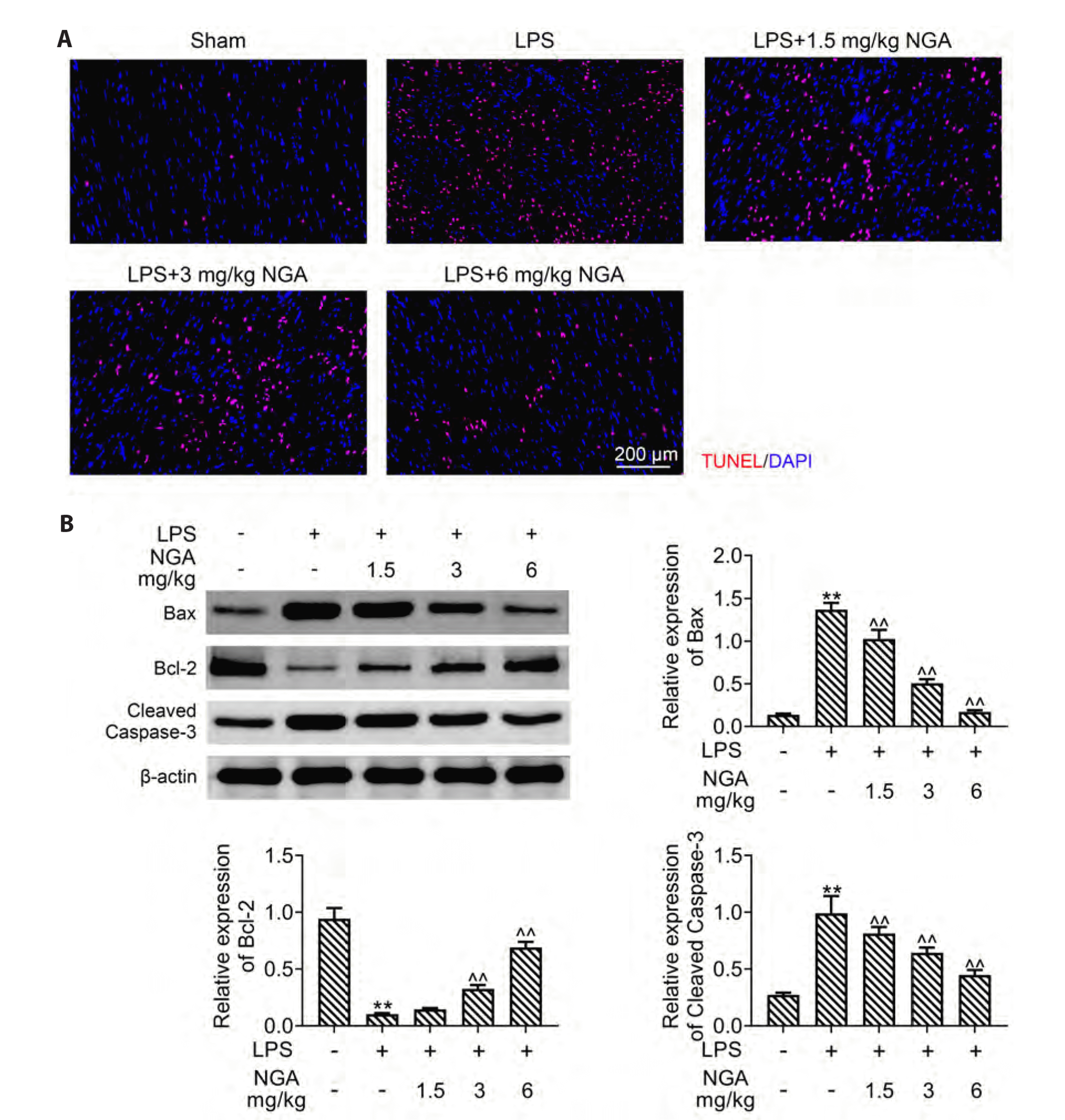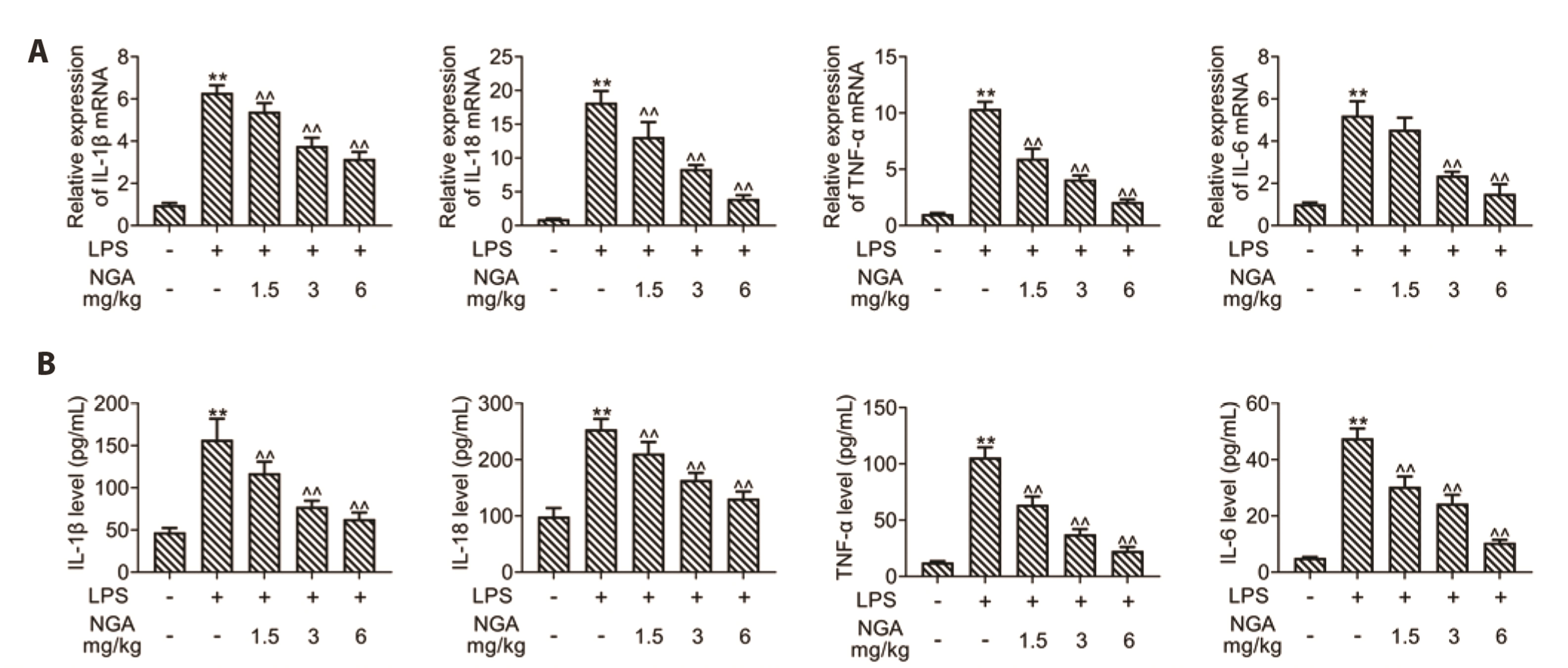2. Song C, Adili A, Kari A, Abuduhaer A. 2021; FSTL1 aggravates sepsis-induced acute kidney injury through regulating TLR4/MyD88/NF-κB pathway in newborn rats. Signa Vitae. 17:167–173.
5. Ho J, Yu J, Wong SH, Zhang L, Liu X, Wong WT, Leung CC, Choi G, Wang MH, Gin T, Chan MT, Wu WK. 2016; Autophagy in sepsis: degradation into exhaustion? Autophagy. 12:1073–1082. DOI:
10.1080/15548627.2016.1179410. PMID:
27172163. PMCID:
PMC4990998. PMID:
https://www.scopus.com/inward/record.uri?partnerID=HzOxMe3b&scp=84979017547&origin=inward.

6. Sun Y, Yao X, Zhang QJ, Zhu M, Liu ZP, Ci B, Xie Y, Carlson D, Rothermel BA, Sun Y, Levine B, Hill JA, Wolf SE, Minei JP, Zang QS. 2018; Beclin-1-dependent autophagy protects the heart during sepsis. Circulation. 138:2247–2262. DOI:
10.1161/CIRCULATIONAHA.117.032821. PMID:
29853517. PMCID:
PMC6274625. PMID:
https://www.scopus.com/inward/record.uri?partnerID=HzOxMe3b&scp=85056463995&origin=inward.

8. Yu X, Zhao Q, Zhang H, Fan C, Zhang X, Xie Q, Xu C, Liu Y, Wu X, Han Q, Zhang H. 2016; Gambogenic acid inhibits LPS-simulated inflammatory response by suppressing NF-κB and MAPK in macrophages. Acta Biochim Biophys Sin (Shanghai). 48:454–461. DOI:
10.1093/abbs/gmw021. PMID:
27025602. PMCID:
PMC4888363. PMID:
https://www.scopus.com/inward/record.uri?partnerID=HzOxMe3b&scp=84966534277&origin=inward.

14. Wang S, Jia D, Lu H, Qu X. 2021; Paeoniflorin improves myocardial injury via p38 MAPK/NF-KB p65 inhibition in lipopolysaccharide-induced mouse. Ann Transl Med. 9:1449. DOI:
10.21037/atm-21-4049. PMID:
34734001. PMCID:
PMC8506776.

17. Pathan N, Franklin JL, Eleftherohorinou H, Wright VJ, Hemingway CA, Waddell SJ, Griffiths M, Dennis JL, Relman DA, Harding SE, Levin M. 2011; Myocardial depressant effects of interleukin 6 in meningococcal sepsis are regulated by p38 mitogen-activated protein kinase. Crit Care Med. 39:1692–1711. DOI:
10.1097/CCM.0b013e3182186d27. PMID:
21494108. PMID:
https://www.scopus.com/inward/record.uri?partnerID=HzOxMe3b&scp=79959661938&origin=inward.

20. Han CK, Tien YC, Jine-Yuan Hsieh D, Ho TJ, Lai CH, Yeh YL, Hsuan Day C, Shen CY, Hsu HH, Lin JY, Huang CY. 2017; Attenuation of the LPS-induced, ERK-mediated upregulation of fibrosis-related factors FGF-2, uPA, MMP-2, and MMP-9 by Carthamus tinctorius L in cardiomyoblasts. Environ Toxicol. 32:754–763. DOI:
10.1002/tox.22275. PMID:
27098997. PMID:
https://www.scopus.com/inward/record.uri?partnerID=HzOxMe3b&scp=84964403973&origin=inward.










 PDF
PDF Citation
Citation Print
Print



 XML Download
XML Download